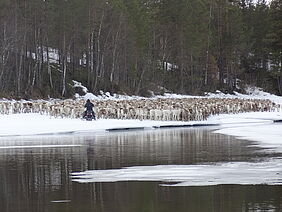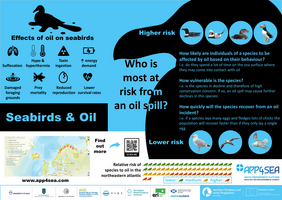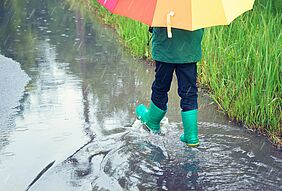The regions in the Northern Periphery and Arctic face many challenges, such as low accessibility and economic diversity, reduced market access, and high impacts of climate change. Because the Arctic is warming twice as fast as any other place on Earth, people living in these areas need to think and act faster than their counterparts in the rest of Europe.
For the past 20 years, the Northern Periphery and Arctic has served as a vast “living lab” where like-minded people worked together, to exchange knowledge and expertise between communities and organisations to find solutions that work for them. As Michael Mann, EU Special Envoy for the Arctic, said during the NPA Annual Event 2021, ”What happens in the Arctic does not stay in the Arctic.“ This does not apply only to the rising temperatures and sea levels, but also to the ideas and solutions that are developed in the Arctic and benefit locally, as well as globally.
How are NPA projects making the Northern Peripheries and Arctic more resilient now and in the future? What are NPA projects doing to ensure a more safe, inclusive, and prosperous Arctic?
NPA projects integrate local and indigenous knowledge in tourism and land-use planning
Before the COVID-19 pandemic, tourism was a fast-growing industry in the Arctic, bringing not only unforeseen economic opportunities, but also cultural conflicts. As Outi Kugapi, former Lead Partner of ARCTISEN from Finland´s University of Lapland, explained in an interview to the National Geographic “Tourists have misinterpreted the general public´s right – the so called “everyman´s right” – allowing anyone living in or visiting Finland, Norway, and Sweden to freely roam around, forage, fish, or camp nearly anywhere, and started wandering around people´s backyards and looking through the windows, thinking that this is okay to do”. Some tension also grew between tourism developers and Sámi people, who became bothered by skiers on their reindeer grazing lands.
To change this perception, the ARCTISEN project supported tourist businesses in Norway, Finland, and Sweden in developing more culturally sensitive products and services. Together, the ARCTISEN partners have co-created three toolkits to help local businesses better understand cultural sensitivity in tourism and to provide inspiration on how to develop tourism products and services that are respecting local and indigenous peoples´ livelihoods. “Cultural sensitivity is not something you can achieve, it´s more a state of mind, a way of working. We hope that the material we created will enhance tourism entrepreneurs´ and decision makers´ capacities to be more culturally sensitive in the future.” Outi Kugapi further explains.
Similarly, the BuSK project developed guidelines for municipalities to include indigenous and local knowledge in land use planning. In Sweden, the Gran reindeer herding community provided knowledge and mapped 350km long reindeer movement route from the coast of the Bay of Bothnia to the Scandinavian mountains. The data collected from the reindeer herders were used by the Swedish Transport Administration when planning a new high-speed train line along the coast in northern Sweden and served as basis for the construction of eco ducts (reindeer over-passes) across the parallel-run E4 highway. Read more about BuSK
NPA projects improve preparedness for oil spill and other environmental accidents
Rising temperatures in the Arctic Ocean and the shrinking Arctic ice cap opened new shipping routes between Europe and Asia through the Northern Sea Route or North-East Passage and made oil and gas reserves at the bottom of the sea more accessible.
The higher number of oil tankers, oil rigs and pipelines in the region has increased the risks of potential accidents. Since, ice and cold temperatures are no longer keeping ships away from the North, it’s become more urgent to improve regional preparedness for large-scale oil spill accidents and keep communities and their environment safe.
The APP4SEA project reviewed current oil spill response (OSR) methods, experiences with tools, models and practices, and based on these findings produced a set of recommendations for the NPA region and suggestions how to improve OSR infrastructure and preparedness level. An Interactive Smart Map developed by the partners gathers information about weather zones, Arctic shipping traffic density, oil spill incidents, NPA region´s ecology and environment, and areas where seabirds are especially at risk, if an oil spill happens.
This map and the data displayed are useful for authorities, organisations and other actors involved in oil spill response. But they can be used also for increasing awareness among the general public thanks to a set of easy and funny infographics. APP4SEA partners joined forces with other projects in the Arctic and Baltic Sea in a new project called POPCORN, expanding the application of their tools to address marine pollution and reaching out to a wider number of authorities involved in preventing and responding to maritime pollution.
NPA projects increase preparedness to climate change through Climate Adaptation Plans
Extreme weather conditions, such as heatwaves, heavy rainfalls and floods are now more frequent due to the climate change. The C.L.I.M.A.T.E. project gathered local municipalities and universities from Sweden, Northern Ireland, Ireland, and Faroe Islands that together worked on increasing the municipalities´ preparedness and adaptation to climate and weather changes. Read more about C.L.I.M.A.T.E.
Cooperation is key to manage change
One of the biggest resources and attributes that the NPA programme has, is the proven capacity to deliver cooperation across a variety of areas partners and sectors. In areas where population is sparse and small, and thereby lacks a critical mass to act on their own cooperation is key to building the capacity to manage changes and be resilient. The NPA programme enables communities which are distant, yet experience similar challenges, to jointly develop solutions that work for themselves, for their regions and beyond.





